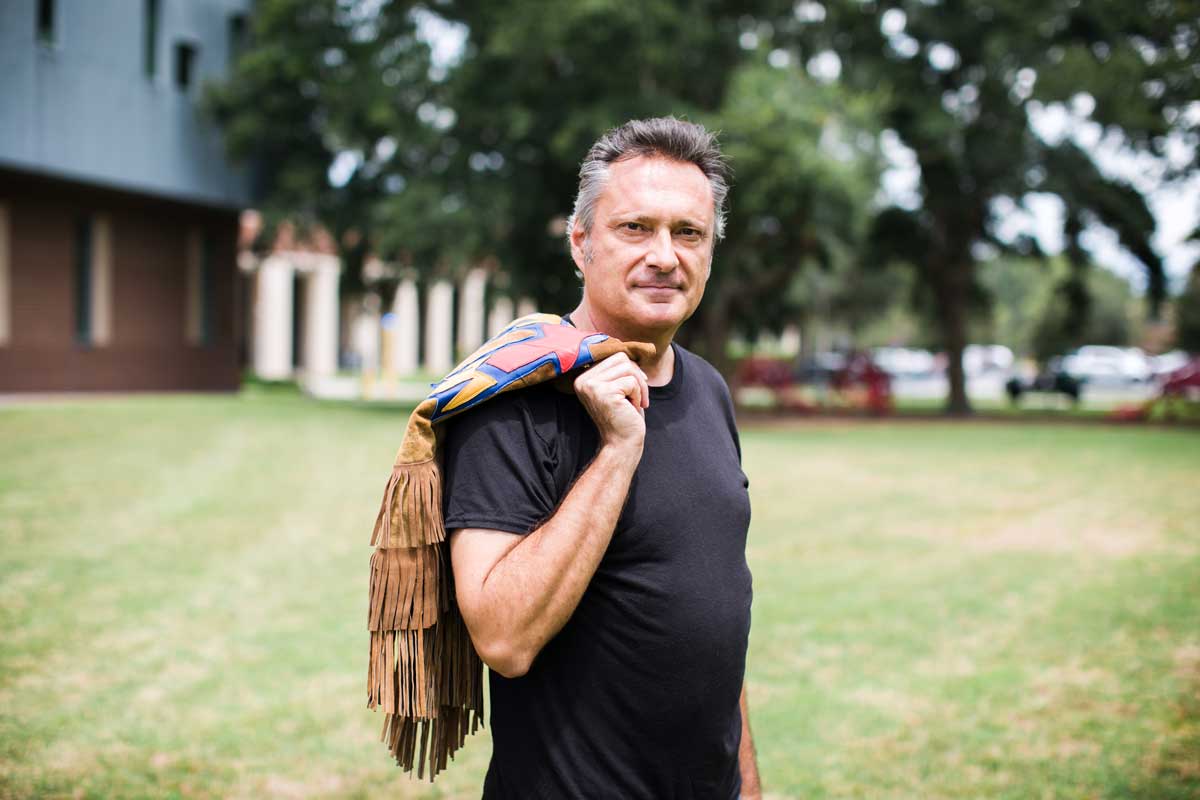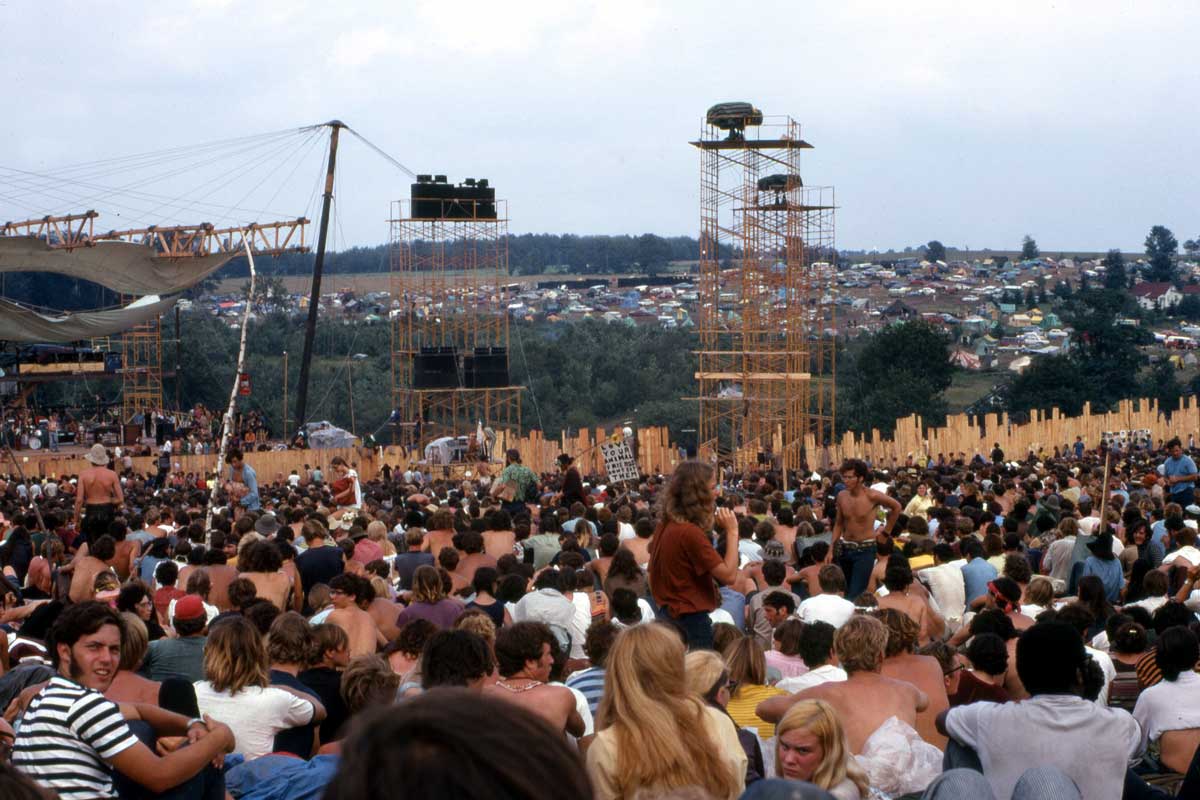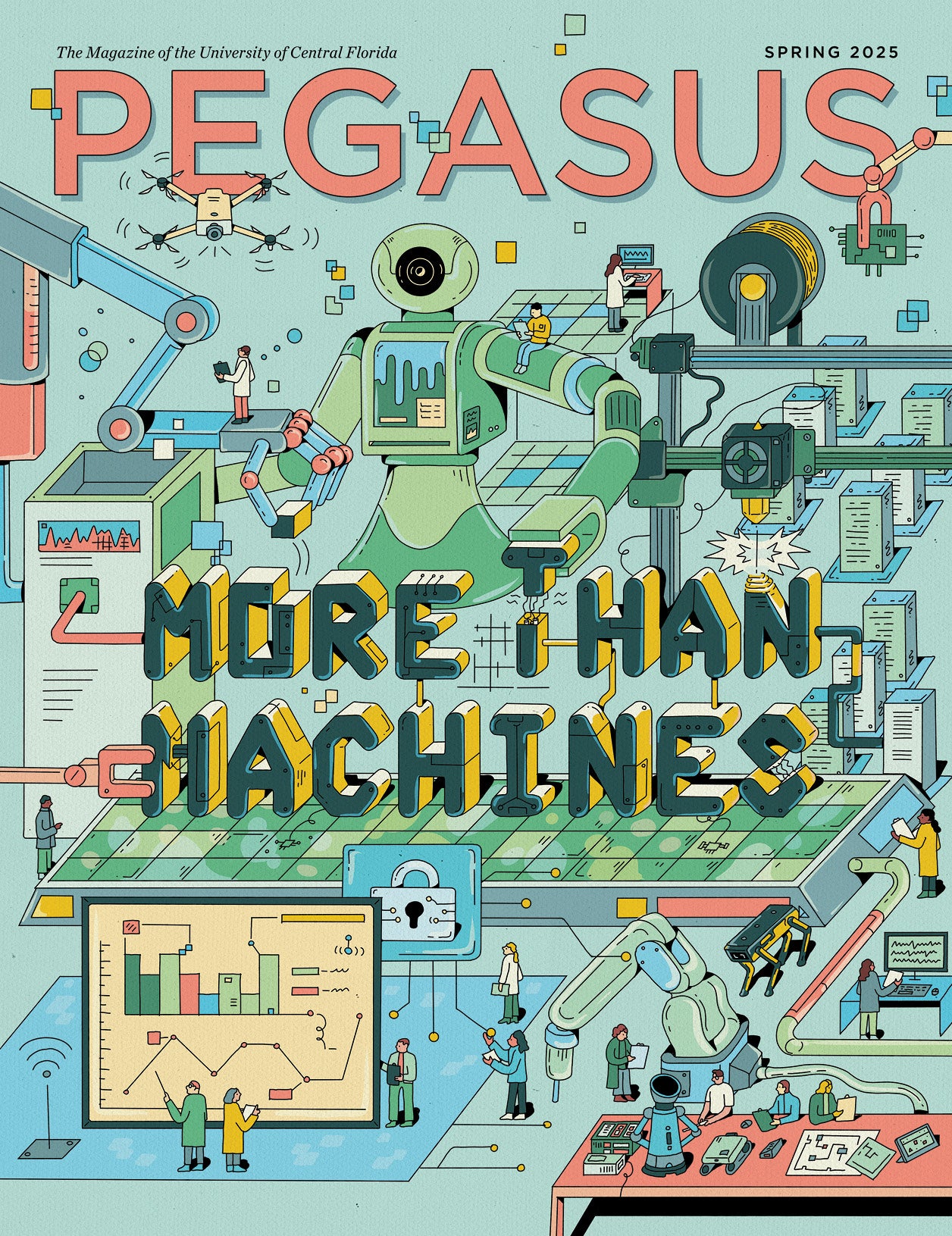In August 1969, the original Woodstock Festival brought together nearly half a million people in a celebration of peace, music and love. The organizers—Michael Lang, John P. Roberts, Joel Rosenman and Artie Kornfeld—had no way of knowing their festival would become the cultural phenomenon of the century with lasting effects rippling through pop culture and the political landscape.
Fifty years later, anniversary celebrations, films, music and books about Woodstock demonstrate that the spirit of the festival is alive and flourishing. George Weremchuk, a saxophonist and associate professor of music in the School of Performing Arts, teaches UCF’s popular “Survey of Rock Music” course, which includes Woodstock in its curriculum.
“The festival came at a time when the young people of America needed that musical outlet,” he says.
How did he become such an expert? “I’m a fan of the music,” Weremchuk says with a smile.
“It was a once-in-a-lifetime event,” Weremchuk says. “They try to duplicate it, and you just can’t fabricate it. Everything just kind of came into balance.” The location was ideal, the lineup was incredible and it was strikingly peaceful for such a massively attended event.
Although plans for an official three-day anniversary concert this month have been cancelled, you can embrace the spirit of Woodstock this week alongside the global community with these little-known facts about the festival from Weremchuk.
1. Though the festival was named for the town of Woodstock, New York, it actually took place on a dairy farm in Bethel, New York, 60 miles southeast of Woodstock.
The festival had a couple different names: Bethel Rock Festival, the Aquarian Music Festival, but the name Woodstock came from the town of Woodstock, New York, where there was a community of artists and musicians who lived there—artists like Bob Dylan. “Two of the organizers of the event had the idea of opening a recording studio in Woodstock,” Weremchuk says, “so the first idea was to have a concert to help fundraise for this recording studio.”
The site where the festival was held, a dairy farm belonging to Max Yasgur, was the organizers’ fourth attempt at a venue: they had struck out in Woodstock, Saugerties and Wallkill before finally finding their location in Bethel.
2. At the time, Woodstock was the largest outdoor music festival, and it’s still one of the largest music festivals in the world to date.
Especially in an age without digital communication, it was a miraculous feat to gather that many people from all over the world and to accomplish such a crowd. Organizers posted advertisements in free press and newspapers all over the country, along with a few in a little magazine called Rolling Stone, then only two years old. It was listed as $7 a day for admission.
“The fact that everything aligned so perfectly and the festival actually happened is a miracle.” — George Weremchuk, associate professor of music
“They thought maybe 150,000 people, 50,000 a day. They had no idea how many people would come,” Weremchuk says. “During that weekend of the festival, it actually became the second or third largest city in New York.” The small rural area didn’t have the infrastructure to support 400,000 people. “The locals didn’t want hippies there,” he says. “There had already been festivals in previous years and the locals didn’t want that many people invading their little bucolic towns.” Due to this pushback, organizers barely obtained permits by Aug. 2. “The fact that everything aligned so perfectly and the festival actually happened is a miracle.”
3. Before plans for Woodstock took shape, two of the event organizers had placed an ad in the Wall Street Journal that read: “Young Men with Unlimited Capitol Looking for Interesting and Legitimate Ideas.”
Several events in the late 1960s served as a catalyst for the festival’s massive draw, such as America’s involvement in the Vietnam War. “Many of the people who attended the festival were against the war and protested it,” Weremchuk says. The Civil Rights Movement was also heavy in the minds of people that age. “The two people who could have changed things were assassinated: Martin Luther King Jr., and a few months later, Robert Kennedy,” Weremchuk adds. Young people became disillusioned with government and what they thought America stood for, and a counterculture evolved. “Some attendees felt they were the only people in their town that believed what they believed in and looked the way they did, and all of a sudden, you have hundreds of thousands of like-minded people together and there was a community that many of these people didn’t know existed.”
4. Woodstock was scheduled to end in the evening of Sunday, Aug. 18, but due to rainy conditions, it concluded on the following morning, with Jimi Hendrix playing the last set at 9 am.
Although Jimi Hendrix had become popular before Woodstock, his rendition of The Star-Spangled Banner was his breakout performance. “People who heard it were dismayed and thought he was unpatriotic, this American who had served in the Army. They didn’t realize the sounds and feedback he could create with his guitar evoked the sounds of bombs exploding and machine-gun fire.” The festival was a starting point for many of the bands, like Santana; Sly and Family Stone; and Crosby, Stills and Nash. “Many of these bands were from San Francisco and didn’t have any exposure anywhere else, and they went on to become internationally recognized and established.”
5. Even with such a large audience, event organizers lost more than $1 million hosting the festival.
Because the organizers ran out of time, the builders had to triage between building necessities like ticket booths, fencing or the stage. “They couldn’t get the fences built in time to be able to charge admission,” Weremchuk comments. “There were already tens of thousands of people there a few days before the start of the festival. Some people had paid for tickets in their hometowns, but the vast majority just showed up and walked in.”

Weremchuk was invited to present on the 50th Anniversary of the Woodstock Music Festival by the Orange County Library System. Join him to learn more about the history of the festival at the downtown branch of the Orlando Public Library on Thursday, Aug. 15, at 6:30 p.m. in the Albertson Room. Registration is encouraged.
If you are interested in the course “Survey of Rock Music” enrollment is still open for the fall semester. Learn more about the courses and other music electives on the UCF Music webpage.




